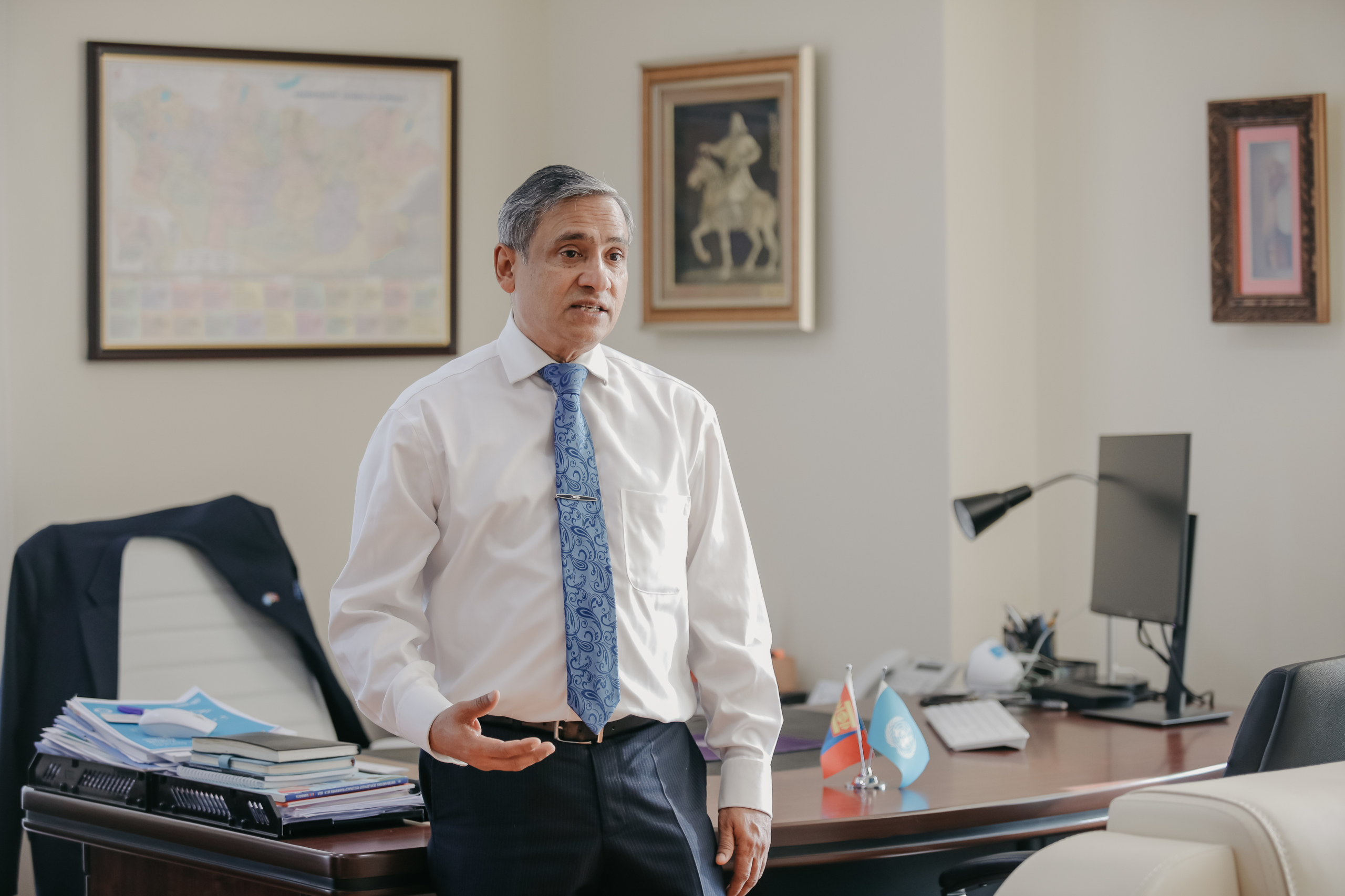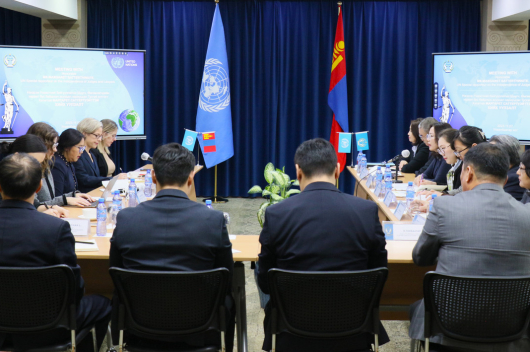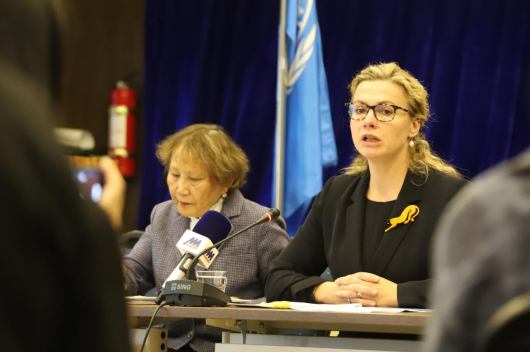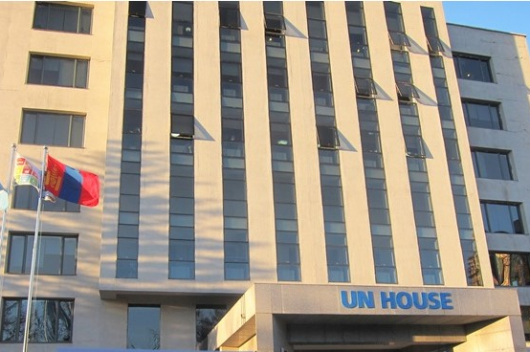Tapan Mishra, Resident Coordinator, United Nations Mongolia
As a landlocked country, Mongolia faces a multitude of challenges in trade and export. Its export is largely dependent on mineral resources and primarily as raw material. Yet, we see tremendous opportunities to tap into the potential in trade and export with possible value-added processing, leveraging the advancement in digitalization, which will boost economic diversification and reduce reliance on the mineral sector.
After a few years of setbacks from the COVID-19 pandemic, the Mongolian economy has shown a sign of recovery in 2022 despite the impact of the Russia-Ukraine crisis. Trade turnover for 2022 increased 32 per cent from that of 2021, helping Mongolia enjoy 4.8 per cent economic growth in 2022.
However, such recovery comes from regaining trade in a specific sector with a particular trading partner – minerals and China. Over 90 per cent of Mongolia’s export items are minerals, while China counts for more than 80 per cent of Mongolia’s total export. This represents a chronically narrow-based Mongolia’s trade structure, making its economy vulnerable to external shocks.
Furthermore, Mongolia, with its geographical disadvantage of being landlocked, suffers from higher costs and a longer time in transportation and trade logistics, moving its goods across borders. Mongolia, suffering from multi-faceted trade challenges, underperforms in the global market despite its huge trade potential.
According to the UN Global Survey on Digital and Sustainable Trade Facilitation 2021, Mongolia stands far lower than the Asia-Pacific regional as well as global averages in implementation. Mongolia’s trade is the least integrated with the world. While it is a member of WTO, it is a party to merely two regional trade agreements – the Economic Partnership Agreement with Japan and the Asia Pacific Trade Agreement (APTA).
Trade and logistics connectivity of Mongolia is significantly constrained. In World Bank’s latest Logistics Performance Index, Mongolia ranked 97th globally. In UNCTAD’s productive capacities index, capacity of a country to produce goods and services and enable it to grow and develop, Mongolia ranked 94th globally.
International trade has been the backbone of Mongolia’s economic growth. Its trade-to-GDP ratio has stood consistently at over 100 per cent. While domestic market expansion is one way of increasing a country’s economic growth, it is not an easy option for Mongolia, as it is a country with a relatively small population spreading over a huge territory.
Given that Mongolia has a limited domestic market base and tremendous natural resources to supply to the global market, trade-led economic growth is an obvious resort for which Mongolia should strive.
 In driving trade-led economic development, Mongolia should take a holistic approach of enhancing its capacity in all four dimensions of trade:
In driving trade-led economic development, Mongolia should take a holistic approach of enhancing its capacity in all four dimensions of trade:
- Facilitation of streamlined procedures, which reduces trade costs.
- Integration which accelerates Mongolia’s access to the global market, thus supporting its third neighbour policy.
- Connectivity links its physical and digital networks to the World for an easier flow of its goods and services. and
- Promotion helps Mongolia cultivate the export market, attracting investment and diversifying industries.
By taking such a holistic approach, Mongolia can address the challenges and leverage the untapped potential effectively. In strengthening Mongolia’s capacity in four dimensions, five cross-cutting enablers: policy/governance, human and financial resource, infrastructure, digitalization, and cooperation – should be levelled up to narrow capacity gaps and create a virtuous trade eco-system.
- Clear policy lays a foundation for creating a trade eco-system while governance ensures its sustainability.
- Human and financial resource is an engine for driving implementation of a trade eco-system and keeps it operational.
- Infrastructure, both soft and hard, stands as a backbone to ensure a seamless flow of goods and services.
- Digitalization streamlines the way we do business and fosters new digital services and businesses.
- Cooperation firms up linkage of Mongolia’s trade ecosystem to those of overseas trading partners for market expansion.
Recognized as one of the means of implementation for the SDGs, trade is directly related to supporting one of three strategic priorities of the United Nations Sustainable Development Cooperation Framework (UNSDCF) Mongolia for 2023 – 2027- green, inclusive, and sustainable growth. As a joint strategic planning framework for collaboration between the United Nations and the Government of Mongolia, the UNSDCF is aligned with the national sustainable development priorities of Mongolia, set in both the New Recovery Policy, a mid-term policy, and Mongolia’s Vision-2050, a long-term development policy.
Trade is an important instrument for realizing two of the New Recovery Policy, recovery of operations of border ports and industrial recovery, as well as goal 4 of the Vision 2050 – becoming a nation with sustainable economic growth.
The United Nations in Mongolia is committed to supporting the Government of Mongolia in narrowing trade development gaps and shaping up its trade ecosystem for sustainable development – an effort of continuously improving trade efficiency while diversifying its export markets and products.
In 2023, the United Nations in Mongolia has already embarked on a series of serious efforts in this front. The Global Digital Dialogue 2023 with a focus on trade and e-Commerce was organized in connection with the launch of the eT Ready report for improving Mongolia’s overall e-Commerce environment and the ICT Expo 2023: Mindgolia for accelerating Mongolia’s transition from mine-centric to mind-driven economy. The World Export Development Forum (WEDF) 2023 will be organized in the last week of June to help cultivate the unrealized export potential. All of them are being done in a close partnership with UN agencies with proven professional expertise and experience in Trade, such as United Nations Conference on Trade and Development (UNCTAD) and International Trade Centre (ITC), as well as with the leadership of the Government of Mongolia.
The United Nations in Mongolia will stand as a strong partner in Mongolia’s trade development journey, in close coordination and cooperation with all relevant stakeholders and key players, including related United Nations agencies and other Development Partners.













Related News